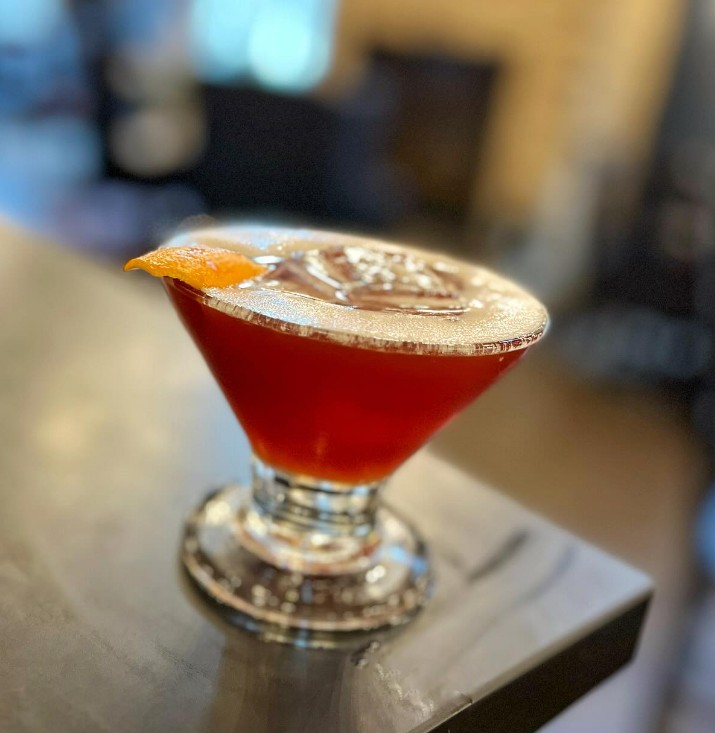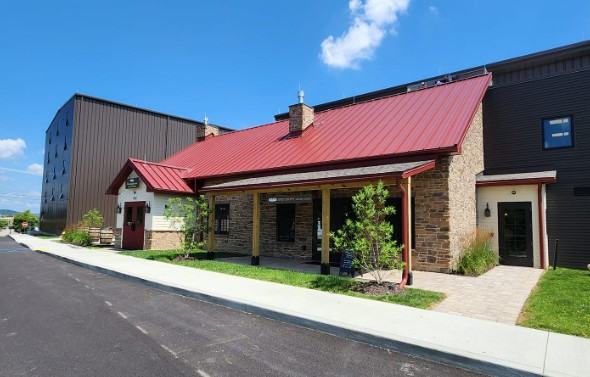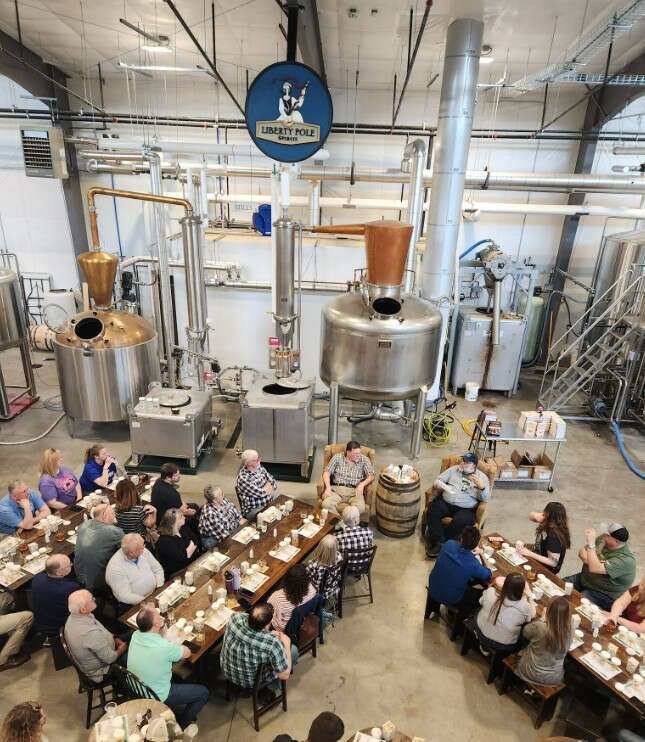We recently connected with Ellen Hough and have shared our conversation below.
Hi Ellen, thanks for joining us today. Naming anything – including a business – is so hard. Right? What’s the story behind how you came up with the name of your brand?
My husband had a hobby making whiskey. In 2014, he was approached by historical planners who were trying to revitalize the history of the Whiskey Rebellion in Washington County, Pennsylvania. They were hoping to attract tourism to a city that had lost revenue after several factories closed down. We felt that we had found our calling for our retirement years.
While my husband refined his craft, I spent time researching the history of the Whiskey Rebellion in the area. With the strong competition in the industry, we felt that to succeed, we had to have a very good product and a very good story at the same time.
To my surprise, many of the popular names associated with the Whiskey Rebellion had been trademarked already. I read countless books about the rebellion, talked to local historians, and read through old documents for at least 6 months, but could find nothing.
I was discussing the search for a name with a friend and telling that there were many interesting things that happened in Washington County that I had never realized. For example, in August of 1794, 400 people came out in the town of Washington to erect a Liberty Pole. There was a flag on it that proclaimed: “Liberty but No Excise”. Imagine doing that, I told her.
She said, “That’s it! You could name the distillery ‘Liberty Pole’. It’s easy to pronounce, curious and hard to forget, and you could have a festival around raising a Liberty Pole.”
It has worked for us. Half our customers come for the carefully-crafted whiskey and learn about the history of the area, and the other half come for the carefully crafted historical atmosphere and learn about the whiskey.


Awesome – so before we get into the rest of our questions, can you briefly introduce yourself to our readers.
Liberty Pole Spirits is a whiskey distillery, making boldly authentic Pennsylvania whiskey since 2016.. My husband and I own the business, along with our two adult sons, and we are all involved in the entire daily operations, from mashing, distilling, aging, blending, sales, and tasting room.
We specialize in Rye Whiskey, which was the type of whiskey made in Pennsylvania during the Whiskey Rebellion of 1794, when the Federal Government imposed a tax on whiskey. We round out our portfolio with Bourbon, a Peated Bourbon, a Corn Whiskey, and a Bourbon Cream. From time to time, we even offer a delightful Single Barrel expression, as well. Each whiskey is crafted from Pennsylvania rye and heirloom corn, along with the water from the Monongahela River Valley water table.
We operate out of a state-of-the-art two acre campus distillery. From the observation platform in our tasting room, which is modeled after an 18th century Roadhouse, customers can view our brew deck. We have four 1000-gallon fermenters and two copper-headed pot stills, filling ten 53-gallon whiskey barrels weekly. Next to the production facility, our whiskey is aging in a 5-story wooden barrelhouse.
We are most proud of having built our business together as a family from the ground up. We have brought recognition to a proud history that was fading away. We attract 40,000 visitors annually and we employee five full-time employees and 20 part-time employees.


Can you open up about how you funded your business?
We initially started the distillery with funds we made from the sale of our family home. We used the money to purchase a 300-gal still, grain, and barrels. We rented an old building in the city of Washington and refurbished it to fit our brand. Our sons joined the team, we received recognition from a whiskey competition for quality, and felt the need to expand again in 2018. We used the profits from our sales to buy bigger equipment and remodel the old building to fit the expansion.
By 2021, we realized the need to expand again in order to meet growing demand for our ever-improving whiskey. After unsuccessfully searching for another larger building, we stumbled on a piece of property and began to explore the possibility of building our current facility. However, we did not have enough money to buy the land and lenders don’t accept the full value of aging whiskey as collateral.
We were sharing dinner with friends one evening and explained the situation. Our friends asked to become a partner. That gave us the idea to give up some of the business in the form of shares. It wasn’t very difficult to find the investors we needed based on our track record of quality and growing sales, and we were able to pick from a long list of interested parties.
Has your business ever had a near-death moment? Would you mind sharing the story?
The first year of operation, we ordered 7 acres of the heritage corn called Bloody Butcher. We didn’t have any place to store it, so the farmer agreed to keep it in a wagon in his barn. We would drive up weekly and shovel some of it into 50-gallon drums and take it back to the distillery. However, it is very important to dry the grain before storing it and none of us knew to do that.
About 2 months into production, we drove to the barn and discovered that the corn had molded. We knew that it was now useless to us, but since we had purchased it and planned on using it for the whole year, we thought perhaps we could ferment it anyway and the taste of mold would go away.
That didn’t work, so we hoped that we could distill it out. Unsuccessful yet again, we felt we had no choice but to put it into barrels and hope that the mold taste disappears with aging.
That didn’t work. I sobbed for two days. Our corn for the rest of the year was gone, we had wasted time and energy, and 15 expensive small barrels were ruined and unusable.
Since the Federal Government monitors the amount of corn that we receive measured against a formula for how many proof gallons we should be able to make for excise tax, we had to film the dumping of the small barrels and submit to them. It was humiliating.
Looking back, I see it now as the cost of education. We learned a great deal from that mistake, and it has given us the knowledge we need to determine faults in our process and turn back quicker in order to avoid substantial losses.
Contact Info:
- Website: https://www.libertypolespirits.com/
- Instagram: libertypolespirits
- Facebook: libertypolespirits
- Twitter: libpolespirits


